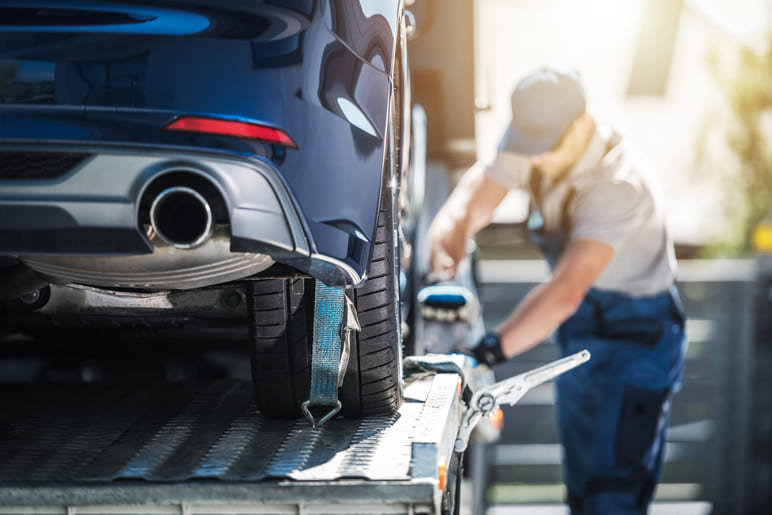
Knowing how to tow a car can help you out of some tough situations, but it isn’t as simple as you might think
It’s a situation we never want to find ourselves in: you’re stuck on the side of the road with a car that won’t start and no idea how to get the motor going again. Whether it’s because you forget to fill up or that pesky check engine light you’ve been ignoring, you’re marooned in the middle of nowhere and, to make matters worse, you haven’t renewed your breakdown cover. When a friend or family member offers to tow you home, it can feel like they are your guardian angel. But without knowing exactly how to tow your car in a legal and safe manner, you shouldn’t be jumping for joy just yet. This is our guide for how to tow a vehicle and what regulations you need to be aware of when towing.
How to tow a car
It isn’t just in the dire circumstances mentioned above that you might want to tow a car. It could be to take a vehicle on holiday, helping during moving, or taking a car that won’t start from your home to a garage. The most important thing is to be prepared for it with the right equipment and to know exactly how you can tow a vehicle.
Using Tow rope or straps
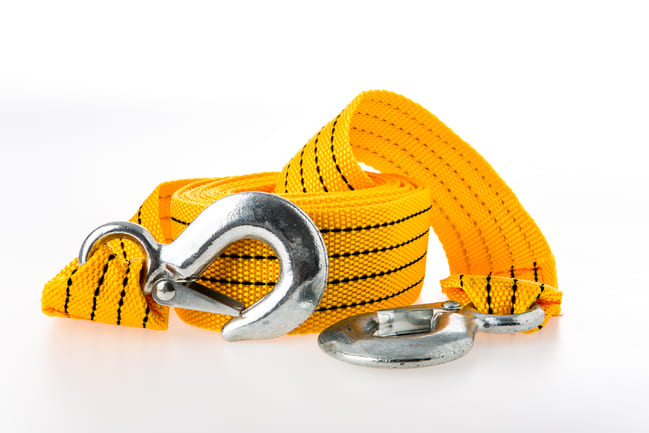
A tow strap is one of the most basic, cheapest, and easiest ways to tow cars. The tow rope needs to be strong and in good condition and should be attached to the front of the car which needs to be towed away. The other end should, of course, be attached to the car doing the towing. Making sure that the rope is attached roughly central and in line on both vehicles will make controlling the direction of the towed vehicle much easier. There are lots of different strengths, sizes, and qualities of tow ropes for different vehicles available on the market, so be sure to consider which you might need when buying a tow rope.
Using a Tow Dolly
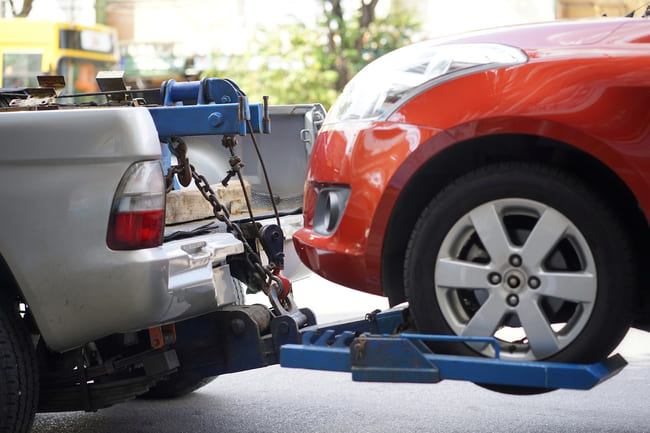
A tow dolly makes it easier to tow vehicles as some of the load is taken from the vehicle doing the towing as only the back wheels of the towed vehicle rest on the ground. The front set of wheels are raised on the dolly itself, which can be coupled with the hitch ball on the back of the vehicle doing the towing, just like a trailer. This generally works better when the towing vehicle is front wheel drive. This is because a rear wheel drive or four wheel drive vehicle means that you have to disconnect the drive shaft for longer distances.
When the dolly is secure, you can load the vehicle being towed. If it is possible, drive the car onto the dolly facing forwards. Make sure the vehicle is properly seated on the dolly.
The front wheels should then be secured using tyre straps and all you have to do is disconnect the drive shaft and you are ready to tow the car away.
Using a Trailer
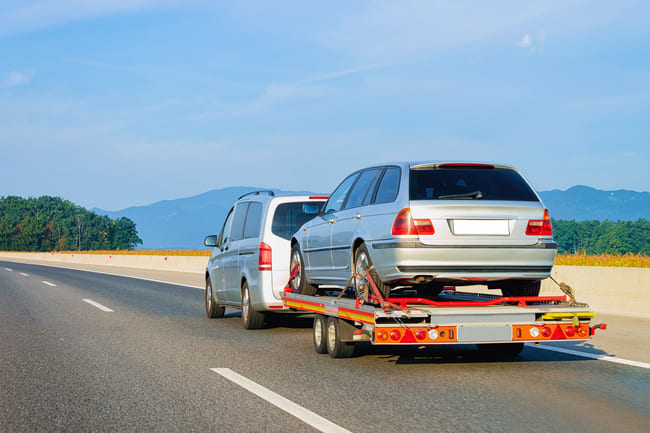
Whereas with a tow dolly only one end of the vehicle will be raised, using a trailer means the vehicle is completely off the ground. It’s by far the easiest way to tow a vehicle, but of course you won’t be taking a trailer around with you everywhere you go.
This is also safer than other methods but it does have its drawbacks, one of which is that the vehicle and tow trailer together might be too heavy for the towing vehicle to manage. Your vehicle’s tow rating is something, therefore, that it is essential you know (for any kind of towing in fact!). This tow rating, or maximum authorised mass (MAM) will be given in KG. For example, a vehicle with a row rating of 800kg MAM will be able to tow a vehicle provided that the weight of both the vehicle being towed and the trailer doesn’t exceed 800kg.
The trailer is attached to the hitch ball of the vehicle that will do the towing. You must make sure that the trailer coupler is secured tightly and that it is attached to the hitch by driving the tow vehicle slightly forward. When you have done this, attach the safety chains that connect from the trailer to the tow vehicle itself. Then connect the trailer wiring harness to the sockets of the tow vehicle. Should the trailer come with a brake battery, you need to check its charge before you begin your journey.
After you have set up and attached the trailer, you will next need to load the vehicle itself. After you have extended the trailer ramps, you would then drive the tow vehicle up the ramp and onto the trailer itself. Make sure that the tow vehicle is centred by slowly driving the vehicle up the ramps.
Continue driving all the way up until the front tyres are resting against the tyre stops that sit at the front of the trailer itself. Then place the vehicle in park and make sure that you have set the parking brake.
You can then attach wheel nets or nylon straps to the towed vehicle to ensure maximum safety.
Using a Tow Bar
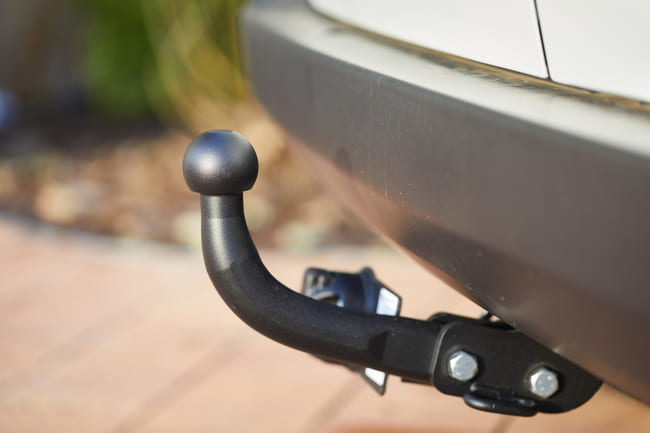
Last but not least, you can also tow cars by using a tow bar. All four wheels of the towed vehicle will be on the ground during this process and you need to make sure that you disconnect the drive shaft to ensure that the transmission doesn’t get damaged as the car is being towed.
Tow bars are mostly commonly used with caravans or when towing vehicles across long distances or cross-country. It is important to note that a tow bar means that you attach brackets to the front frame of the vehicle which is doing the towing. If you can’t do this yourself, a technician or expert can help you.
First you must secure the brackets. Find the strongest part of the vehicle frame to attach the bracket to, one on each side of the front. Then check the brake lights and turn signals to ensure that they work together simultaneously. You can purchase a wiring system that will connect to and coordinate with the lights and turn signals so that they will work together.
Finally, attach the tow bar. After you have attached the tow bar brackets to the towed vehicle itself, you make certain that the bolts are secured using a socket wrench. After you attached the tow bar, make certain to secure it by attaching safety chains from the tow vehicle to the pivot bracket itself.
Rules for Towing
Towing a car with another car is completely legal, provided certain guidelines are followed.These have to be followed at all times, especially if the vehicle is being towed in an emergency situation and it might not immediately be clear that a vehicle is being towed.
Note: These rules are based on the UK law – when towing in other European countries local laws should be consulted.
Top Towing Tips
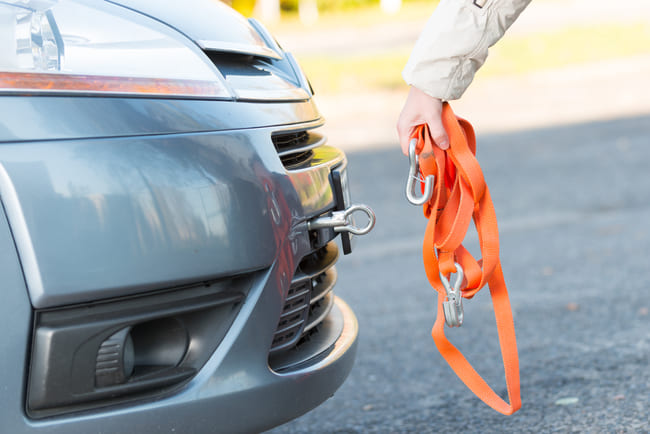


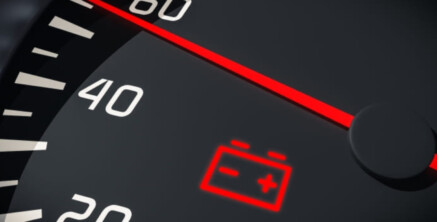


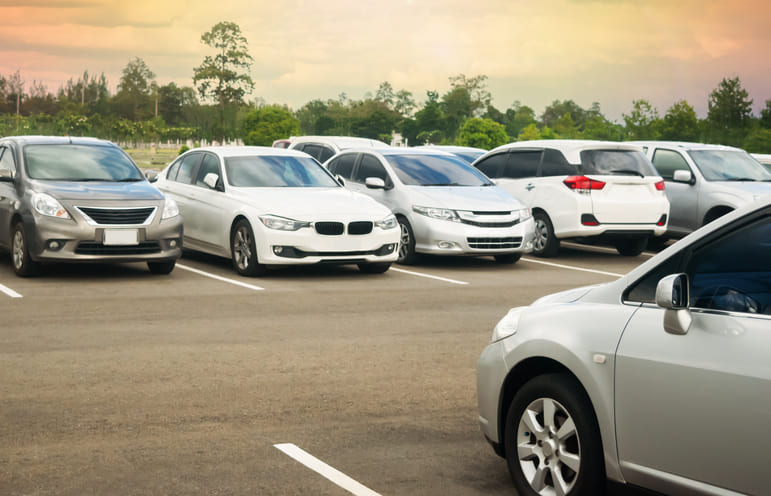
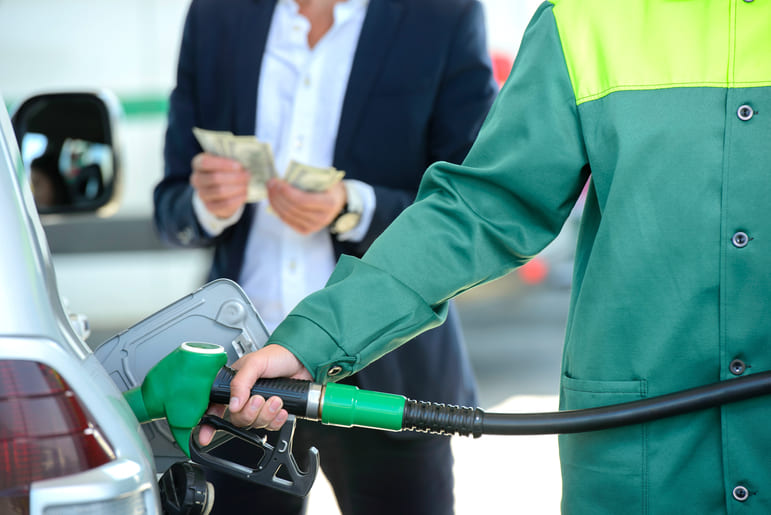
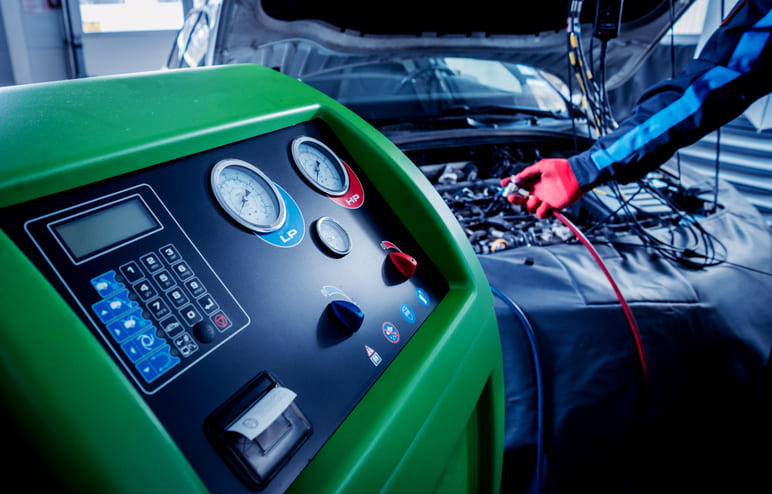
Comment